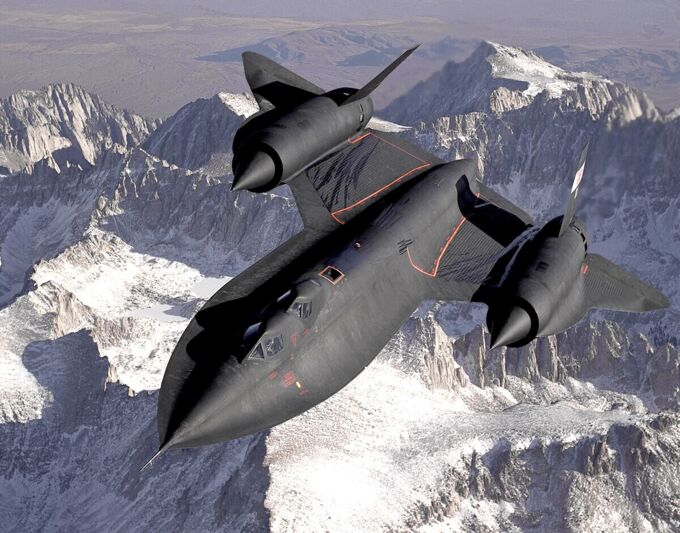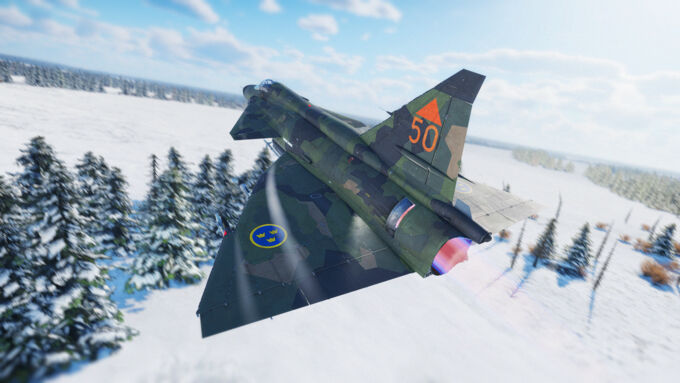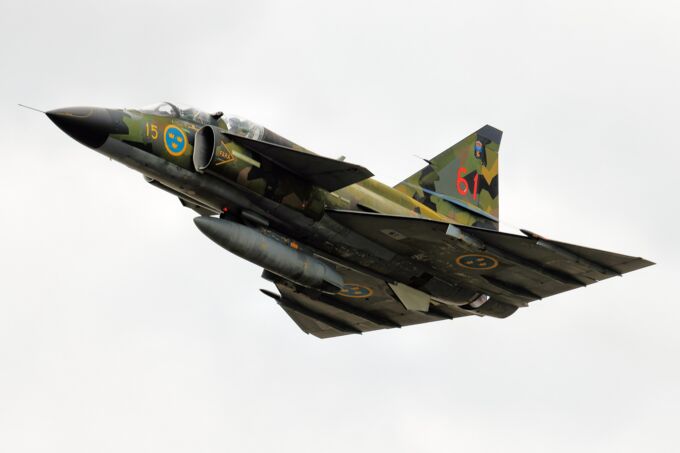The Cold War was a unique period of world history. The fierce confrontation between the USSR and the USA led to the birth of many unique aircraft used in specialized missions, one of which was the high-altitude supersonic reconnaissance aircraft of the US Air Force, SR-71, nicknamed the Blackbird. This aircraft, created in the '60s, was practically invulnerable to interception by both ground and air defense systems as it could develop an outstanding speed of over Mach 3.0 at an altitude of over 22,000 meters.
In total I have five hot intercepts against the SR-71 to my credit. All can be described as successful.
During this period, many countries began to react in order to protect themselves from any kind of threats. Sweden was one of them. On February 8, 1967, the Saab 37 Viggen, one of the most advanced military aircraft of the time, made its first flight. The Saab 37 is a single-seat, single-engine, multirole fighter aircraft of the Swedish Air Force (Flygvapnet), capable of accelerating to a speed of Mach 2.1 at an altitude of 18 000 meters. The Viggen was the world's first fighter aircraft with an on-board computer and integrated circuits inside. The JA 37 was part of one of the most powerful air defense systems of the time, the STRIL 60, thanks to which Swedish Air Force pilots quickly received information from ground radars through data transmission.
In short, it was a flying computer of that time, brand new even for the leading powers in the field of military technology. It was this fighter that guarded the skies of Sweden for many years.
In the 1980s, tensions were rising again, therefore, the SR-71 reconnaissance flights deep into over Baltics became more frequent. At the peak of the Cold War, JA 37 pilots had to fly up to 500 QRA missions. The fact is that foreign aircraft often flew close to Swedish airspace – SR-71s were constantly flying in the area of Swedish airspace, between the mainland and the island of Gotland, as well as at the Kodan point, 80 km south of Copenhagen.
This would trigger the "Baltic Express" – the routine of Swedish pilots when the SR-71 appeared in the sky. On alert, the pilots of the JA 37 took to the air and, trying to gain high speed in a compartment with a high altitude, while simultaneously receiving data from ground control centers, tried to "capture" a high-altitude reconnaissance radar. In case the enemy needed to be shot down, the pilot had to use an arsenal of air-to-air radar missiles using the PS-46 pulse-Doppler radar to approach head-on at a speed of Mach 4–5. At first, the Swedish pilots were unable to intercept them, since the SR-71 had advanced electronic countermeasures, but later they learned to bypass them. All this, from beginning to end, was an extremely difficult task.
The first successful interception attempt took place in 1981 over the Baltic Sea
It (SR-71) operated on varied altitude, but at least 22,000 meters, at Mach 2.2. Sometimes faster. If it was a clear day, one could see them up there, in the blue skies. And we successfully acquired air-to-air lock on them, all the time up there. Of course with fictitious missiles. We never fired live ammunition.
One could always spot the SR-71 – They left a clear visible trail from their special kind of engines.
In 1987, an incident occurred that remained classified for a long time. On June 29, an SR-71 aircraft piloted by Tom Weltry and Dwayne Noll got damaged – one of the engines exploded. The Blackbird rapidly began to lose altitude, dropping from 22,000 to 6,000 meters in a few minutes, slowing down from 3,000 to 700 km/h. The plane veered off course and ended up over the island of Gotland, violating Swedish airspace. Soviet MiG-25 fighters rose to intercept, having received orders to destroy or force the plane to land at any cost. Suddenly, a pair of Saab 37 Viggen appeared in the sky, piloted by Roger Moeller and Christer Seberg. Soon, they left the Blackbird for refueling, another pair replaced them, those piloted by Lars-Eric Blood and Bo Ignell. Having successfully escorted the SR-71, the Swedish fighters descended back. Later, the reconnaissance aircraft managed to land at the allied airfield. Every of them, apart from Bo Ignell, were awarded the United States Air Force Air Medal for Bravery in 2018.
In conclusion, I would like to note not only that the Swedish Saab 37 was a truly unique fighter for its time, but also that there are no aircraft invulnerable, no matter how advanced it is and no matter how difficult it is to get.
Image credit: U.S. Air Force, Wikimedia Commons, kr1sp7



